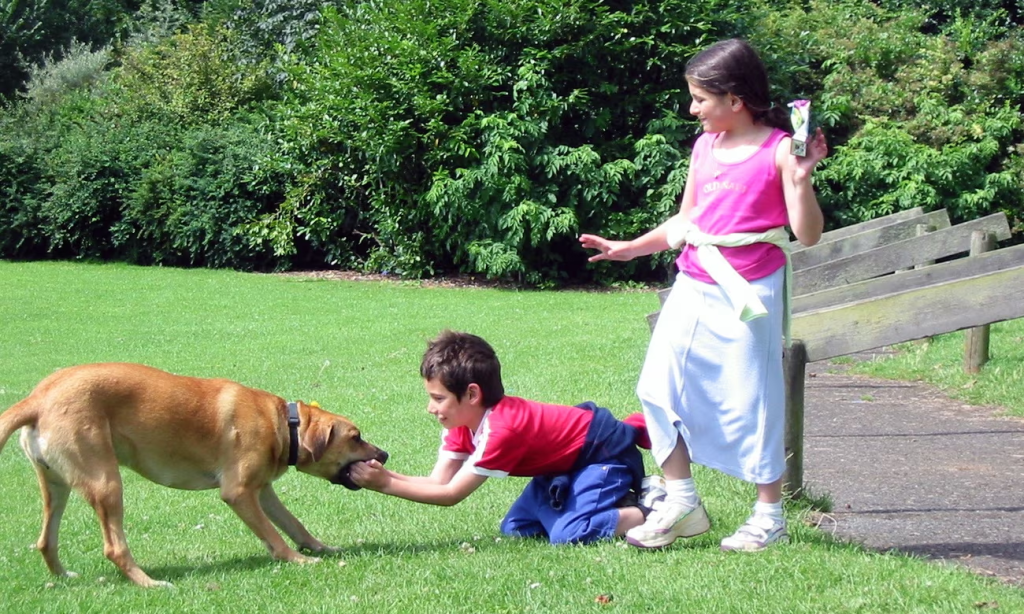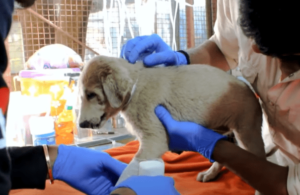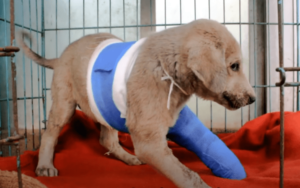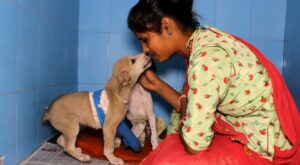
Mum, Dad, my brother Michael: everyone in the family got more affection from our ridgeback-staffie cross. And guess whose bed she used to poo on…
I think the tone was set when Ella threw up over me on the way back from the Dogs Trust. She was three months old, rolling around on the back seat between me and my twin brother, Michael (we’d just turned seven), and wasn’t enjoying her first trip in a car. She could have been sick anywhere – over the seat, over the floor – but for some reason she decided to climb on to me first.
It was the start of a beautiful but strangely one-sided friendship. Ella, a ridgeback-staffie cross, was the perfect dog: playful, energetic, naughty and tolerant. She would let us poke and prod her without complaint, turn her ears inside-out or dress her up in T-shirts or the thick woollen poncho my Greek Cypriot grandma knitted her for the British winter. And she was endlessly loving, at least to the other members of the family. Me? Too often it was as if I didn’t exist. If Michael and I were sitting on the sofa, she’d bound up to him. If I came home after a day out with my dad, he was the one she’d jump at. If I tried to take her for a walk by myself, she’d drag her feet and insist that I fetch my brother.
To add insult to injury, about once a year she would do a poo in the house. Not just anywhere, though: she’d climb the stairs to my room and leave it in a neat pile on top of my bed.

I can’t pretend I wasn’t offended by Ella’s attitude – I loved her just as much as anyone. But it took me a while to realise that in her eyes we were both bitches fighting for our place in the pack. I read that dogs are 98.8% wolf, even yappy little chihuahuas. Ella was a definite she-wolf and my mother (she who opened the tin of dog food every night) was the undisputed alpha female. Ella could handle that fact, but she didn’t want to be the omega female. That was me.
Working out the reasons for Ella’s lack of sisterhood, understanding that her indifference was atavistic and not just casual, didn’t make me any less jealous of my brother, who always took great pleasure in the fact that Ella seemed to prefer him. But I resigned myself to the situation. And then one day (happy ending, anyone?) everything changed. I must have been 16 or 17, we’d been away for a fortnight in France, and when we got back it was me she ran up to first, whining and twisting with pleasure at seeing me again. After that it was like all those years of competition had never happened. We were best friends for ever, or at least for the couple of years she had left. Ella finally loved me.
Touching rescue: despite her injured nose, the puppy gave kisses as soon as she could.

It is a reminder that even in the darkest of times, there is always the potential for kindness and compassion.
This brave little girl was saved by a nice passer-by after her nose bled heavily, splattering her legs with clotted blood. She was put onto a carry-basket and evaluated for injuries, including a seriously sprained leg.

Despite her suffering and bewilderment, she proved to be a tough braveheart. After getting pain treatment, supporting bandages, and many of love, her tail produced a little wag, indicating her life-loving enthusiasm.

This story of courage and resilience is an uplifting reminder of the strength of the human spirit. It is a monument to the power of kindness and compassion, and how even the tiniest acts of kindness can make a difference in someone’s life.

The little girl’s story is a reminder of the necessity of being prepared for medical crises. It is crucial to have a first aid kit on available and to know how to utilize it. It is also important to know how to spot the signals of a medical emergency and to ask for aid if required.

It is also important to be aware of the risks associated with specific activity. For example, if a child is playing outside, it is important to make sure they are wearing protective clothing and that they are monitored. It is also important to be aware of the potential for injuries and to take actions to prevent them.

Lastly, it is important to remember that even in the most terrible of situations, there is always hope. This little girl’s story is a reminder that even in the face of misfortune, there is always the potential for resilience and courage.

It is a reminder that even at the worst of circumstances, there is still the potential for kindness and compassion.



Leave a Reply